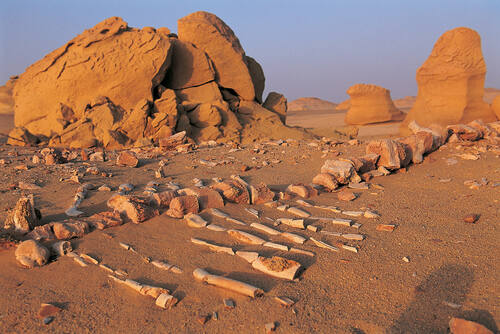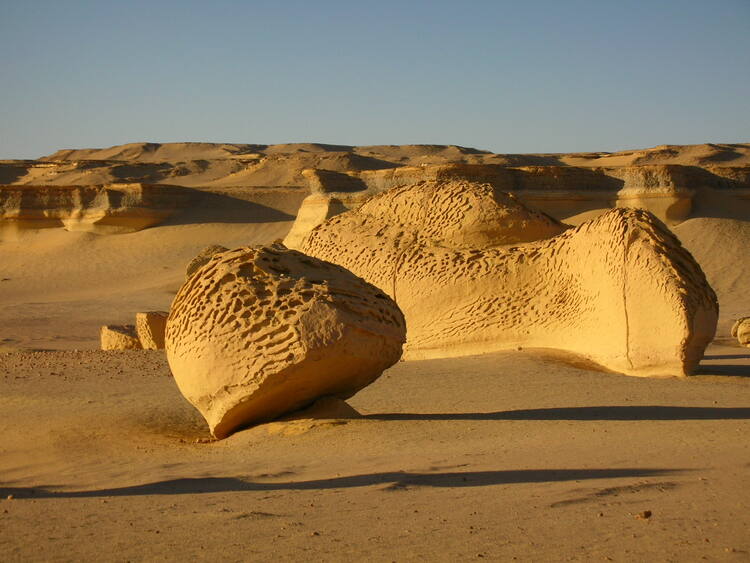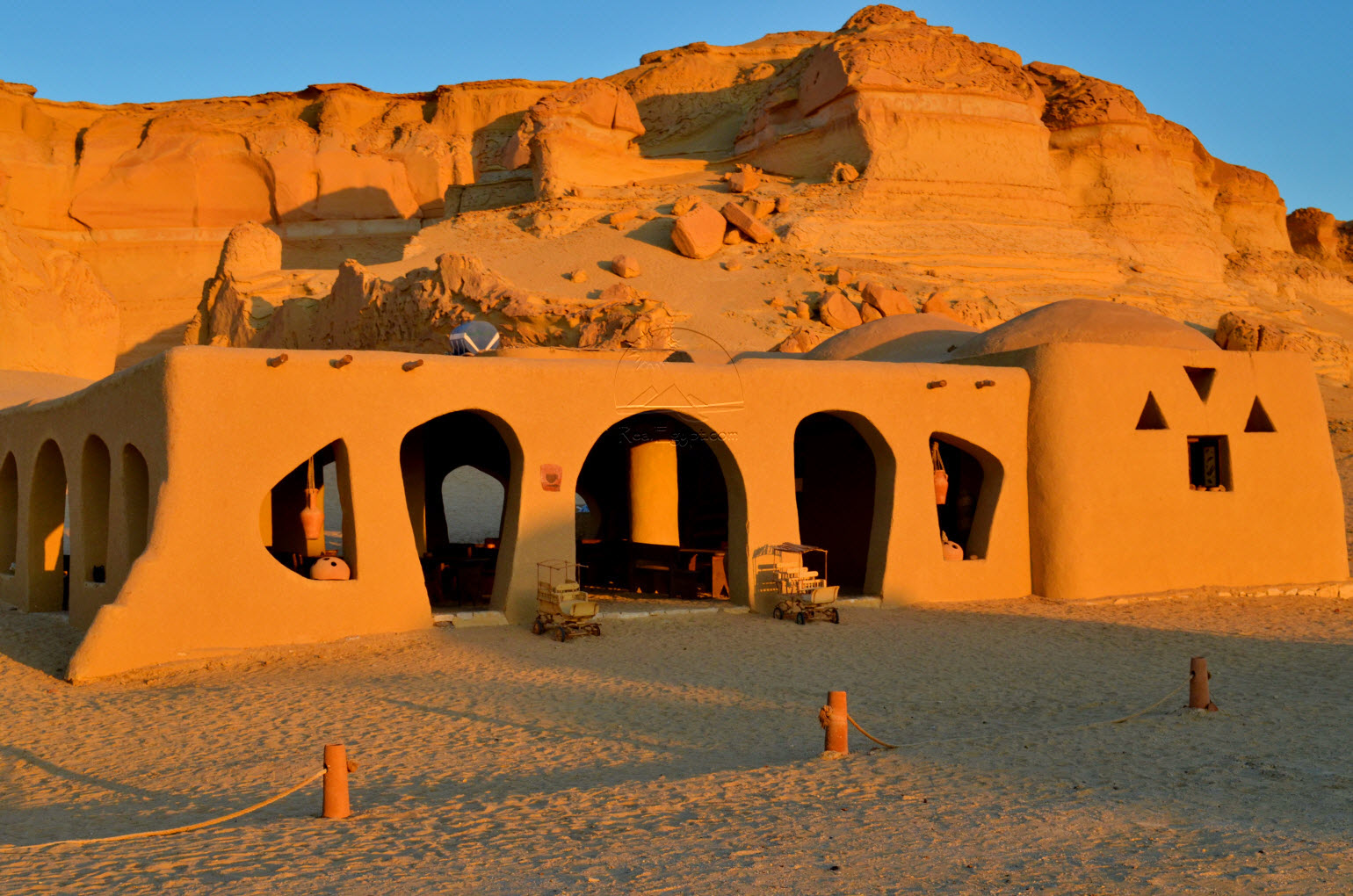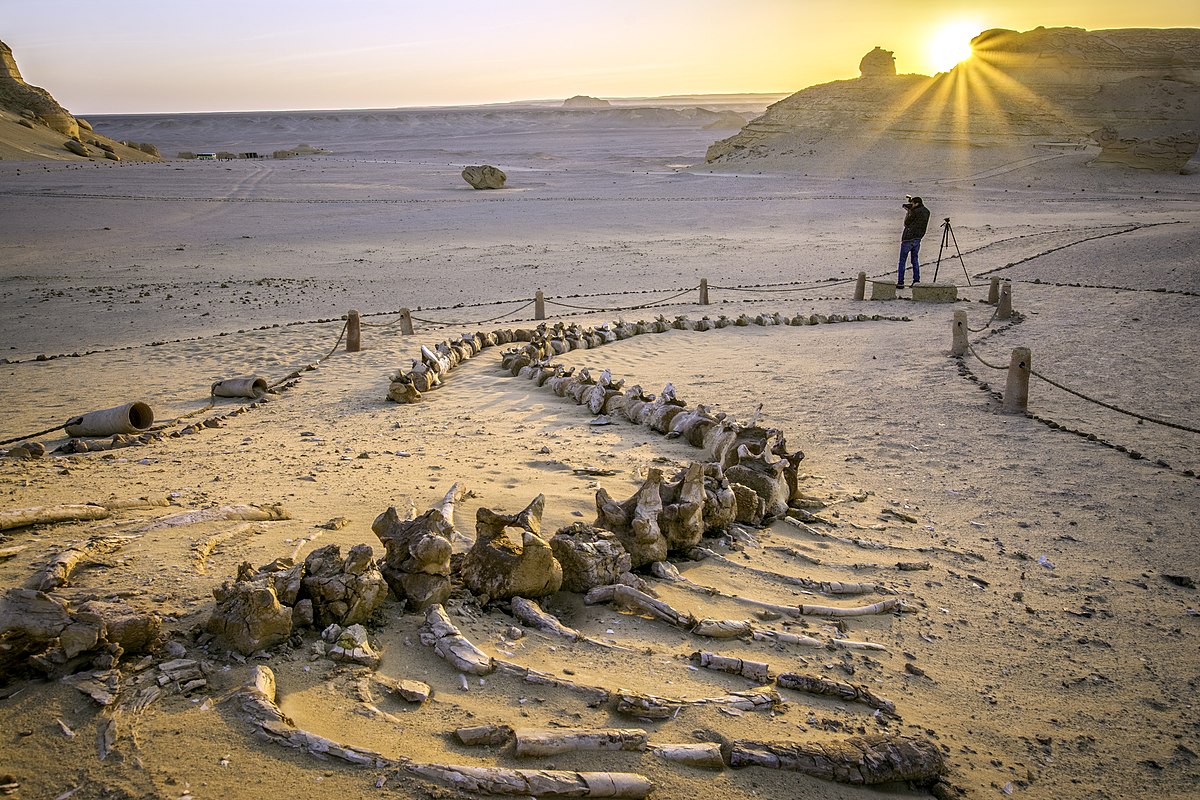
Bedded in the sands of Al-Fayoum is a different understanding of Egyptian history; here, there are no temple tracks and incense, no inked Coptic and no athan. Rather, in a time-sculpted expanse, Wadi al-Hitan (Valley of the Whales) carries some of evolution’s most baffling finds.
A collection of whale fossils – with hind legs.
Dating back 40 to 50 million years, Wadi al-Hitan is a paleontological miracle-find; although not the oldest site worldwide, it presents an interesting subset of questions that have yet to be answered—rather, it introduces more questions than answers, period. Still, with millions of skeletal remains intact, including some with the contents of their stomachs available for study, Wadi al-Hitan is a remarkable, game-changing discovery.
The large fossil collection poses a scientific promise, consisting of a long-extinct suborder of whales known as the archaeoceti revealed by winds, erosion, and archeological excavation. Set apart from their modern, seafaring counterparts, the critical addition of legs suggests a land-based origin for whales as a species.


After its discovery in 1902, Wadi al-Hitan has been cited as a “rare and valuable snapshot of whales in the final stages of losing their hind limbs,” marking a key node in their marine evolution. Although the valley is an essential find, it has left biologists scrambling to identify the whale’s earliest ancestor. Similarities in tooth-shape led to an assumption that whales may have shared roots with mesonychids: carnivorous mammals not unlike wolves.
It was only in 2005 that scientists uncovered the “missing link” between whales and their closest relative, the hippopotamus. This was a hand-in-hand research that compared the finds of Wadi al-Hitan to cetacean fossils found in Pakistan. Startlingly, whales were placed in a taxonomic group which included animals such as camels, pigs, and giraffes.


That same year, after such vital conclusions, the valley was considered a protectorate by the Egyptian state and a UNESCO World Heritage site.
Though Wadi al-Hitan borrows its name from the whales, they are not the only ancient guests. The area is also home to ancient animal remains including those of sharks, crocodiles, and turtles. Due to its hard-to-reach nature, the valley is not a common destination for tourists, but those who have been have described it as an “alien landscape,” and a “amazing surreal experience.”
Set within the wider protectorate of Wadi al-Rayan, the valley is 150 kilometers southwest of Cairo and is thought to have been submerged in what was once the Tethys Sea.
If anything, Wadi al-Hitan is an open-air, vivid documentation of what once was Egypt before Egypt.







Comments (7)
[…] of unique activities available during the season – from prehistoric fossil-spotting in the Valley of the Whales to horseback riding that starts in farmlands and ends by Lake Qarun. Even migratory birdwatching […]
[…] less than two hours south west of Cairo, the Fayoum Oasis is undoubtedly one of Egypt’s most biodiverse and scenic hidden treasures. If you’re looking to escape from the city, Fayyoum’s natural rhythm is unmatched. Brimming […]